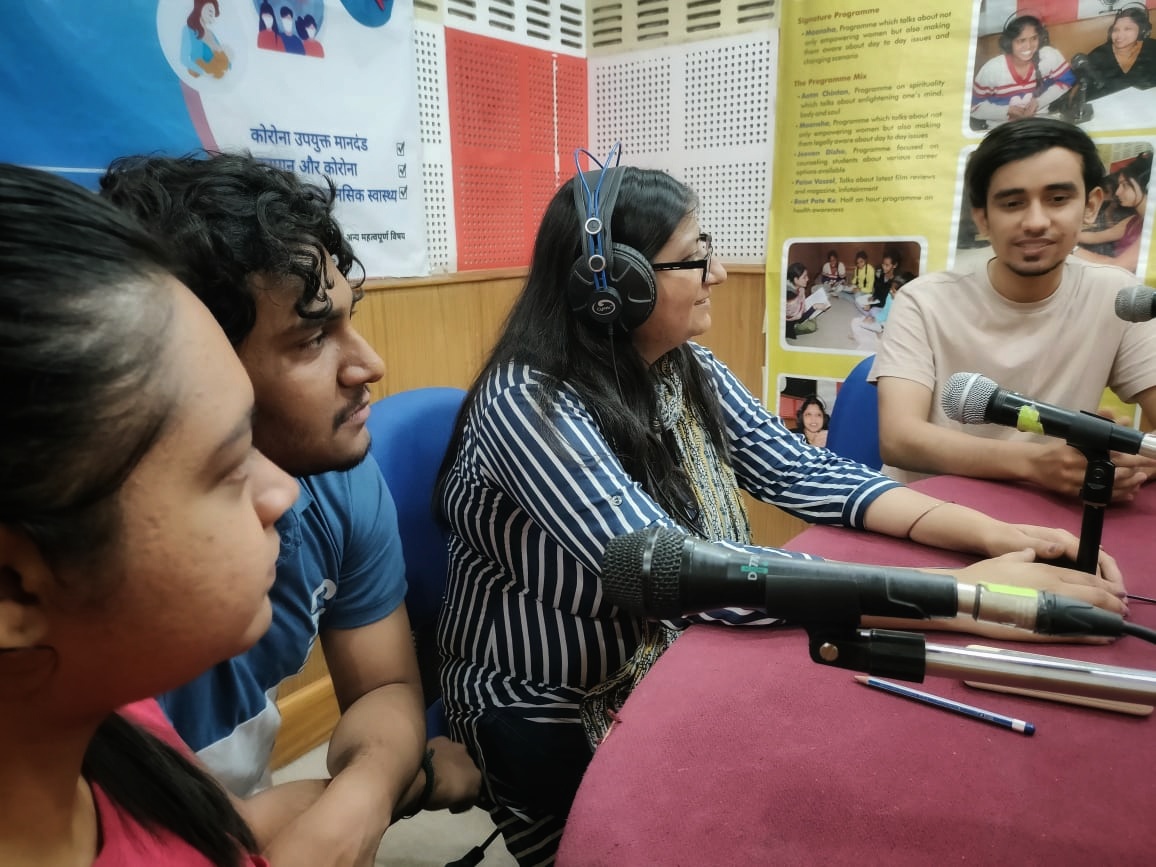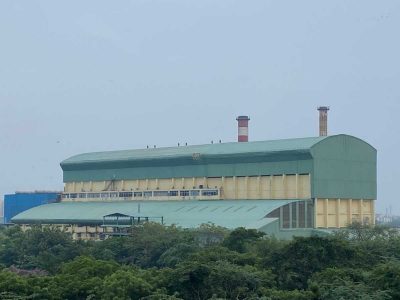The telephones at Alfaz-e-Mewat, a community radio station, ring incessantly every Thursday morning because its recently-launched weekly programme Mitti Di Khusboo, which is aired at that time, attracts questions from listeners.
The 20-minute programme, which talks about farming techniques and health of the soil, is driven by queries raised by its listeners.
“Mewat is a region dominated by the farming community. About 80% of the people completely rely on farming to make ends meet. It is important for the farmers to know about the condition of the soil. Healthy soil is the foundation of productive and sustainable agriculture,” explains Fakat Hussain, station co-ordinator.
“With the help of our programme, we try to educate the farmers on how they should get the soil checked. Not only this, we have special programmes that address the concern of our farmers, from informing about latest technologies to helping them understand the dynamics of irrigation system.”
Programmes such as these have become possible due to community radio stations such as Alfaz-e-Mewat. From being aired one hour a day initially when it was launched in February, 2012, to 12 hours a day and seven days a week nowadays, the importance of the community radio in the lives of people of Mewat is immense.
The radio station caters to 183 villages and produces content on matters related to health, sanitation, land, and agriculture.
The sound-proof broadcasting room has all the paraphernalia — microphones, mixer consoles, computers, amplifier, transmitter among other things. The walls are smeared with posters featuring inspirational quotes from the staff. There’s a chart paper which reminds the staff of the schedule for the day/week.
Empowerment and social change
“Unlike mainstream media, community radios are for the people and by the people. The content is produced by the people of Mewat and it is for its people,” tells Pooja O. Murada, Director of Communications at SM Sehgal Foundation, a charitable trust working at the grassroots level.
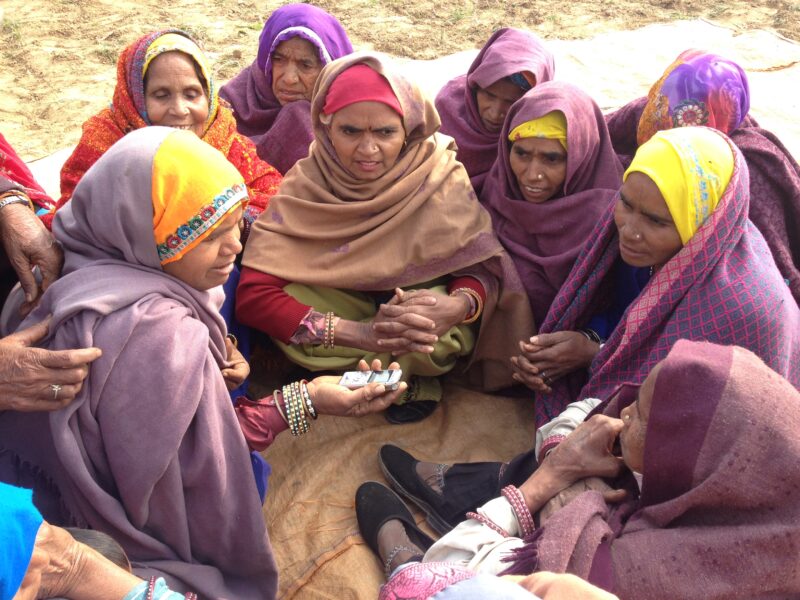
Alfaz-e-Mewat FM 107.8 was one of the participating stations in the Science, Technology and Innovation Policy, 2020 (STIP2020) project of Indian Government’s Department of Science and Technology (DST) and Commonwealth Educational Media Centre for Asia (CEMCA).
“Community radios play a crucial role in disseminating information to the illiterate, the neo-literate, the elderly, children, women and youth. We witnessed the potential of community radios during the pandemic when states were trying to inform the citizens about Coronavirus and all the essential details. We telecasted special programme called “Mission Corona” from June 18, 2020. About 150 community radios across the country broadcasted the series aimed at sharing the information on Coronavirus in local dialects and regional languages,” explains Pooja.
“The biggest challenge during the pandemic was vaccination. In the beginning, people were extremely scared and apprehensive about vaccines. Mewat in Haryana has the lowest literacy rate and it was challenging for us to convince people that vaccination is absolutely safe. When we got successful at convincing one person in the region, we invited the person over the station and he spoke about the experience of vaccination and that it is totally safe. So, once people realised that someone from their own community has been vaccinated, they felt assured that there’s no harm. Moreover, mainstream media can’t penetrate the villages due to local language barrier,” adds Pooja.
Gali, Gali, Sim, Sim for kids, Kisse aur Kahaniyaan for elderly people and Hello Farmaish for Mewati folk song lovers — Alfaz-e-Mewat has something to offer to everyone in the community.
Community radios are not just a bridge between the state and community, they are the force of empowerment and social change.
“We don’t just inform or entertain the community, but we make sure that it is a medium to express oneself. Fighting misinformation and rumours is also on our agenda. In addition, villagers themselves are involved in the programmes which is a way of empowering them. We inform them about legal rights and government schemes and they also voice their opinions on problems. That’s how community radios function in the society,” says Hussain.
Technology, financial sustainability is key
According to a study on listenership, reach and effectiveness of community radio stations in India, published by Ministry of Information and Broadcasting , Government of India, “Community radio is a type of radio service that caters to the interests of a certain area, broadcasts content that is popular to a local audience but which may often be overlooked by commercial or mass media broadcasters. Community radio can play a vital role in the development and democratisation of a society by enabling communities to articulate their experiences and critically examine the issues, processes and policies affecting their lives. It is a particularly effective means of communication in communities where most people can neither read nor write, as those people can speak and listen. Its listenership and reach is therefore, far more important than the readership of newspapers and audience of television, particularly in developing countries.”
Other initiatives
On March 6, 2006, the then vice-chancellor of Jamia Millia Islamia, Professor Mushirul Hasan inaugurated Radio Jamia 90.4 FM. Seventeen years down the line, the radio caters to the pulse of the community.
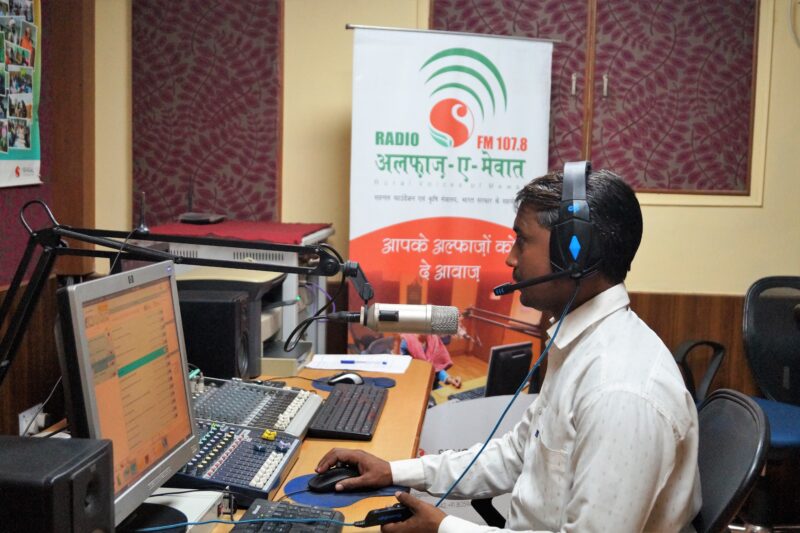
“During the pandemic, I decided to broadcast lessons for students as educational institutions were closed. We have four schools in the Jamia campus and we targetted the student community via programmes which we used to broadcast for half an hour every day. We also have an application where these programmes were uploaded so that students could download them on their mobile phones and listen to the lessons whenever they felt like,” informs Shakeel Akhter, producer, Community Radio, Jamia Millia Islamia. Through a variety of show formats like interviews, discussion and Vox-Pop (Voice of the People), Radio Jamia 90.4 FM works for the effective ways of bringing people of the community together.
“The challenge is technology and financial sustainability. We lack revenue streams in India, and in order to be innovative we need to expand ourselves in technology. For instance, at the moment a basic set-up comprises only a mic and a computer connected to the frequency modulation (FM) transmitter through a mixer. It is important to note that we need tools for connecting with the community on the ground. So to keep innovating, we need to have that kind of support in technology and financial assistance. At Radio Jamia, we charge every student about 60 rupees per program as we have our own model of funding. However, not all community radios have such sustainable financial systems in place and therefore, it becomes difficult for them to function smoothly.”
Another challenge that Akhter points out is the fact that community radios lack engagement with people in cities.
He adds, “In mega cities like Mumbai, Delhi, Chennai and Kolkata, people have access to smartphones, and subsequently information. People don’t have time to be a part of community radios and by the very nature, community radios are for the people and by the people. It is all about involvement of everyone in the community. In cities, people have no time to switch on a radio station. Instead, they would scroll down Instagram feed on the smartphone. In underdeveloped areas within a city, there’s immense value of community radios. People have time there to spend in creating content and regularly engage in the process.”
Other barriers
Muskan Verma, Vice President Digital, Community Radio JIMS, Vasant Kunj 90.4 MHz says, “Community radios use local language and produce relatable content which are their USP. Recently, we introduced programmes addressing mental health issues that people face. I feel what distinguishes community radios from the mainstream media is the raw culture that they possess. And by this, I mean that a community radio functions in a safe space for people. We use local language and everything is explained in a very simple language. Whereas in mainstream media, language becomes a huge barrier in reaching out to everyone. We build a strong bond with people that helps in increasing engagement with them.”
JIMS community radio was set up in 2005 to provide a platform to voice the issues of the community living in and around the Vasant Kunj area. The radio station works in a radius of 5km. Over a period of time, JIMS community radio has received several outreach projects and funding from the Ministry of Information and Broadcasting which has kept the boat floating.
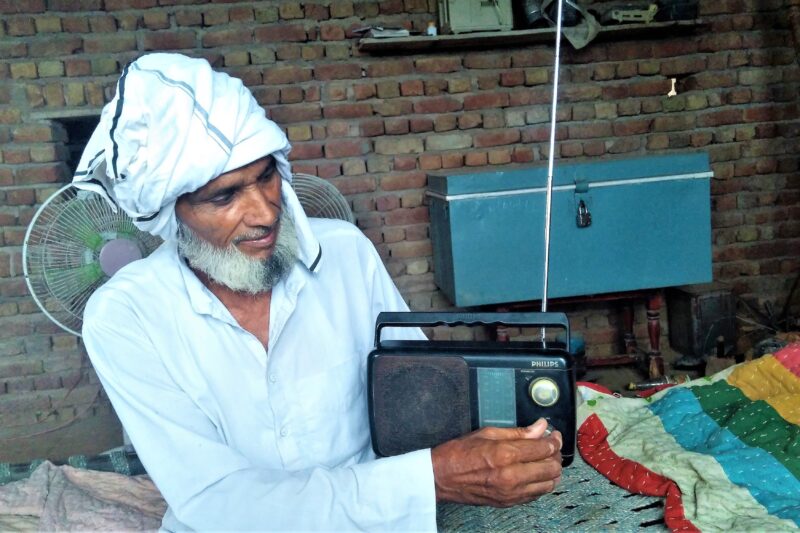
When we speak of the involvement of local people in community radios, then it is important to take note of the fact that while people in rural areas might have more leisure time as compared to those in cities, the involvement depends on various other factors too.
“There is a large number of people from Meo Muslim community residing in Mewat. It is one of the most backward districts identified by the Ministry of Minority Affairs. The problem that we face is lack of participation of the women from the community. They don’t want to join us at the radio station because of traditions and customs. Having said that, we try to convince them and in recent past, the participation of women in our programmes has increased drastically,” says Hussain from Alfaz-e-Mewat.

